150 Friends Problem
f ( x ) = x 1 5 0 + x 2 − 7 x + 1
Let x 1 , x 2 , x 3 … x 1 5 0 be the roots of the above equation. Define
S = i = 1 ∑ 1 5 0 ( 1 + x i ) 2 1
Find ∣ S ∣ .
The answer is 1982.39.
This section requires Javascript.
You are seeing this because something didn't load right. We suggest you, (a) try
refreshing the page, (b) enabling javascript if it is disabled on your browser and,
finally, (c)
loading the
non-javascript version of this page
. We're sorry about the hassle.
3 solutions
Moderator note:
Since you tagged this problem with algebra, what would be an algebraic approach?
Bingo!! Same method! Amazing problem and congrats on 150 followers!
Good. It took me a few seconds only to crack the idea of this problem as I had previously posted a similar problem: An Intriguing Polynomial Problem
Also Shivamani had added a similar problem being inspired my my problem: 400 Followers Problem
I've also linked your problem with mine as a Sister Problem! :D
Log in to reply
but it's little different than yours. :)
I think even transformation of the polynomial helps...
Log in to reply
Yaah! Nice idea +1. but it makes the solution little lengthy
Log in to reply
that's true but its a pass for someone who doesn't want to use or doesn't know calculus..
U really back?? No studies?? :P
Vieta is all you need.
Since you tagged this problem with algebra (as opposed to calculus), what would be an algebraic approach?
Log in to reply
An algebraic approach would be using the transformations.
Awesome!Brilliant!
i solved it using algebra and nice problem!!
This is knowledge.
My failure in first attempt was caused by a careless mistake of 7 being taken as 1.
i did same
let t=1/1+x
=>x=(1-t)/t
sub x=(1-t)/t in f(x)=o
we get,
(1-t)^{150}+t^{148}*(1-t)^{2}-7t^{149}(1-t)+t^{150}=0
we get binomial expansion given the pic.
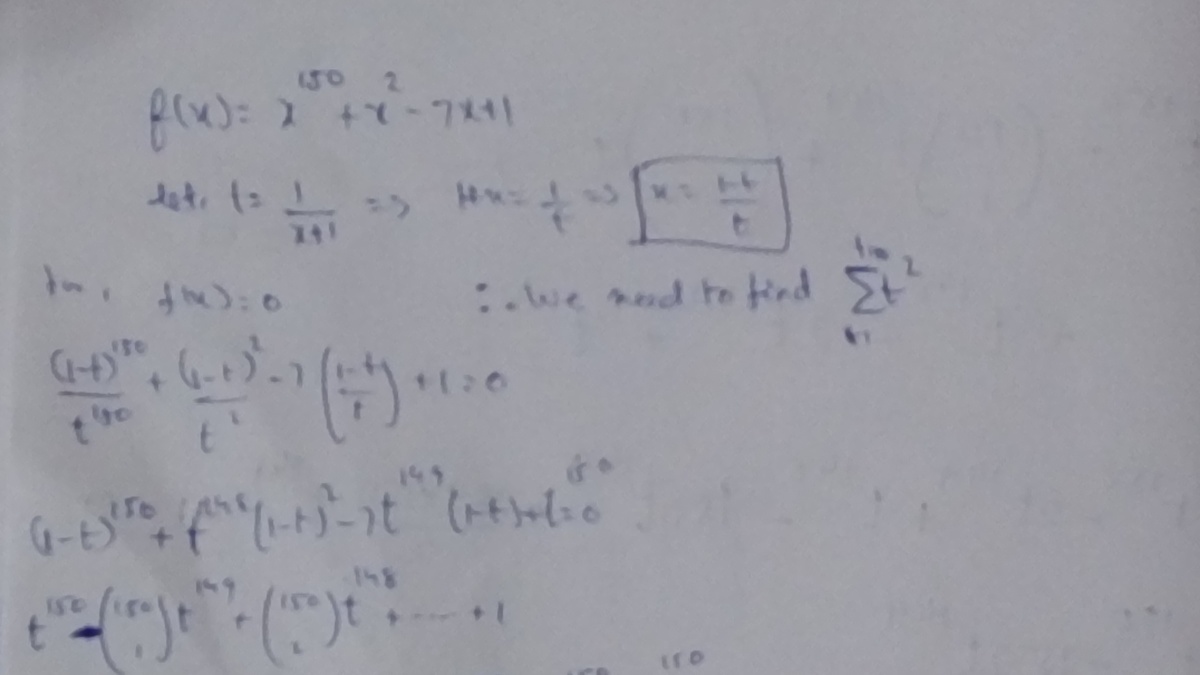
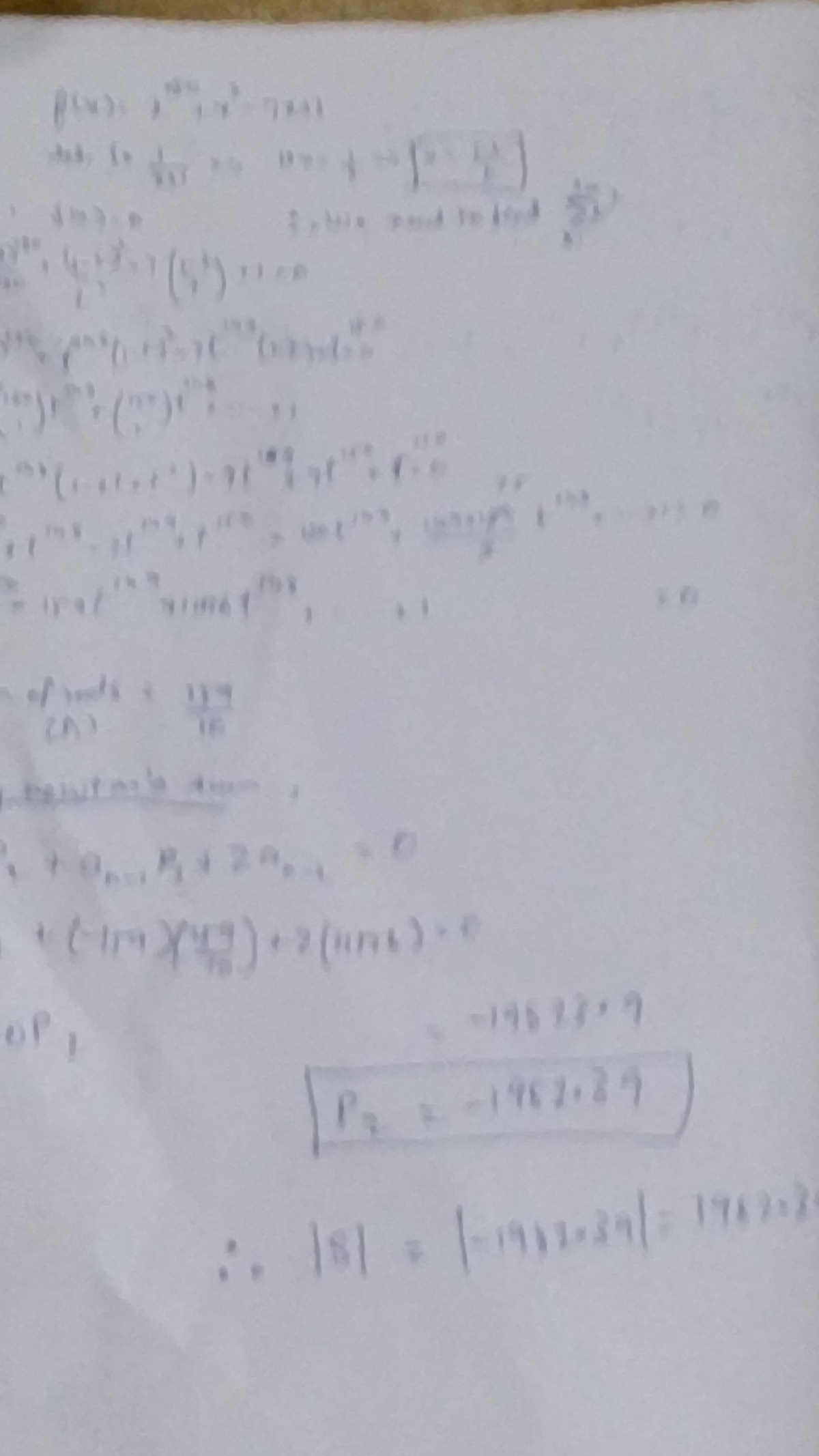
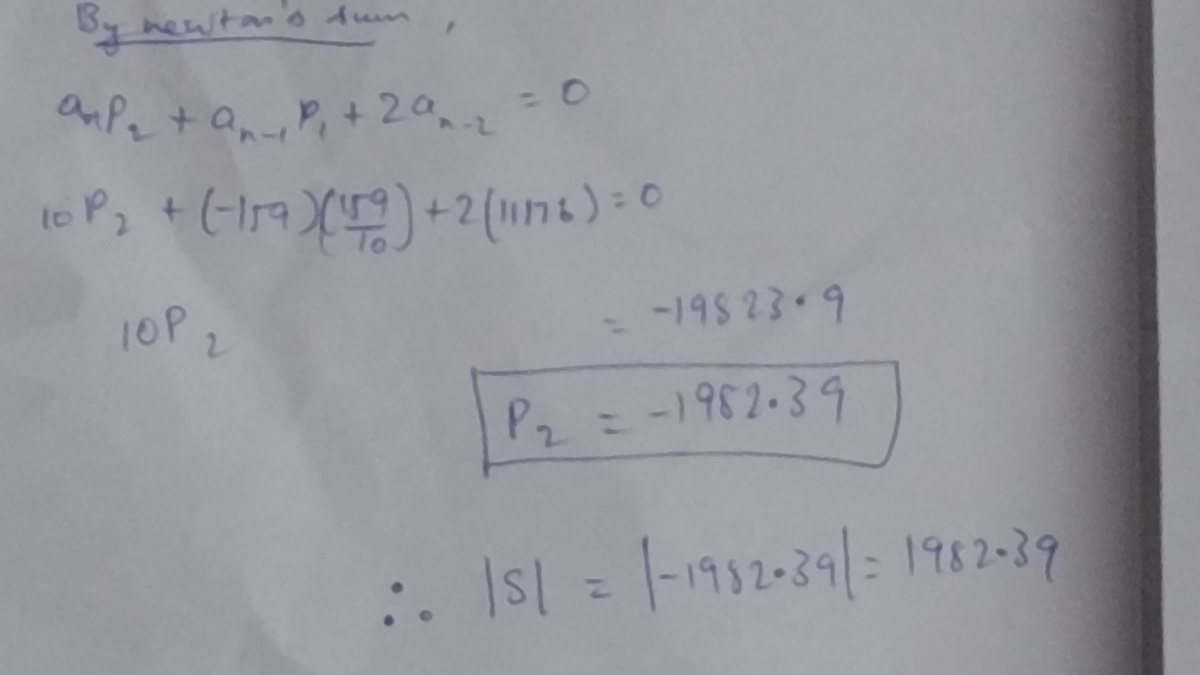
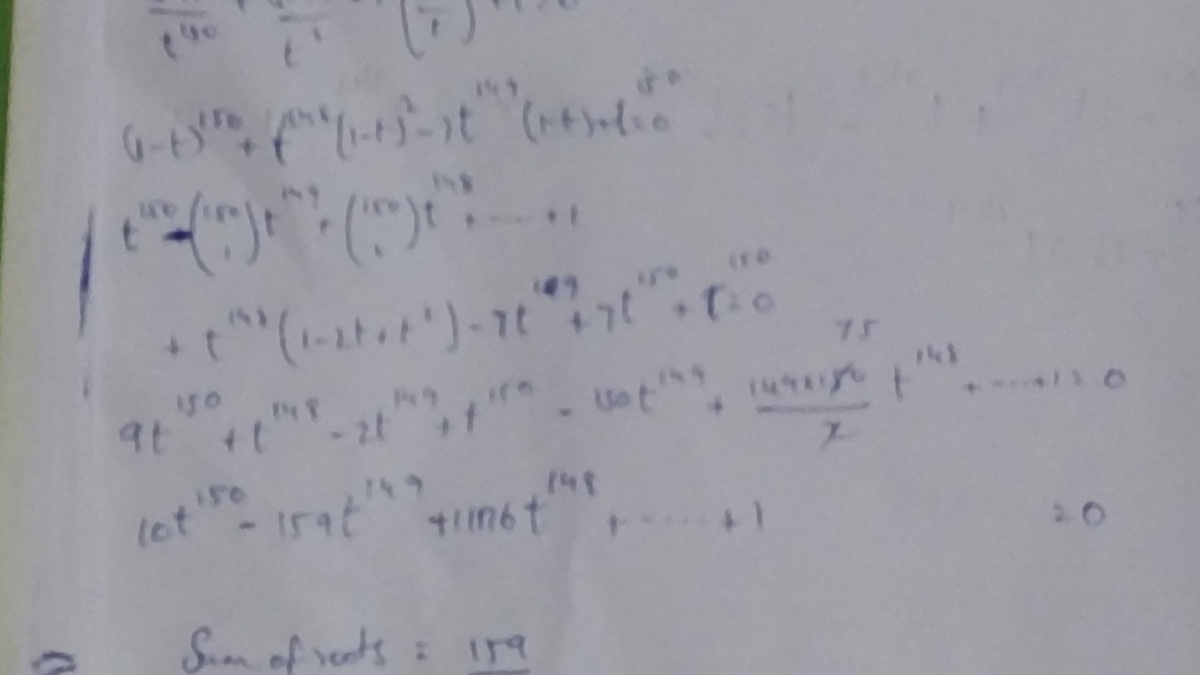
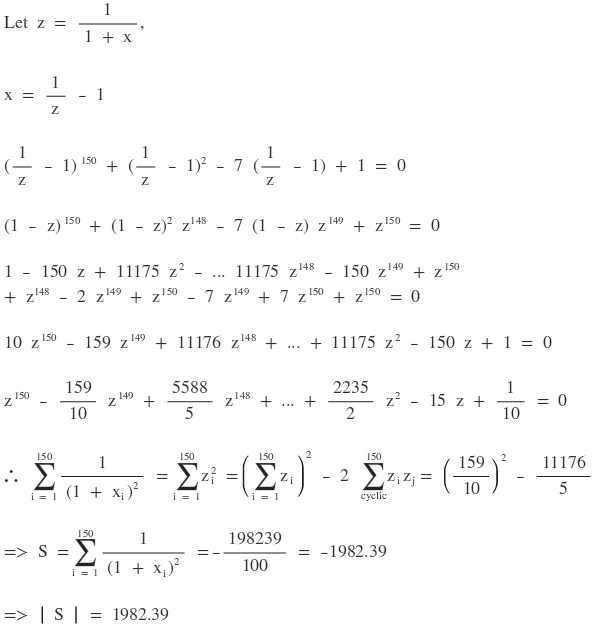
Since, x 1 , x 2 , … x 1 5 0 are the roots of f ( x ) .
So, f ( x ) = ( x − x 1 ) ( x − x 2 ) … ( x − x 1 5 0 ) .
Differentiating it w.r.t x and dividing it with f ( x ) . We get
f ( x ) f ′ ( x ) = i = 1 ∑ 1 5 0 x − x i 1
Differentiating again w.r.t x . We get,
f 2 ( x ) ( f ′ ( x ) ) 2 − f ( x ) f ′ ′ ( x ) = − i = 1 ∑ 1 5 0 ( x − x i ) 2 1
Taking x = − 1 , we get, f 2 ( − 1 ) ( f ′ ( − 1 ) ) 2 − f ( − 1 ) f ′ ′ ( − 1 ) = − i = 1 ∑ 1 5 0 ( − 1 − x i ) 2 1
But we have f ( − 1 ) = 1 0 , f ′ ( − 1 ) = − 1 5 9 and f ′ ′ ( − 1 ) = 2 2 3 5 2 . Substituting and solving them we get,
S = i = 1 ∑ 1 5 0 ( 1 + x i ) 2 1 = − 1 9 8 2 . 3 9
So, ∣ S ∣ = 1 9 8 2 . 3 9 .